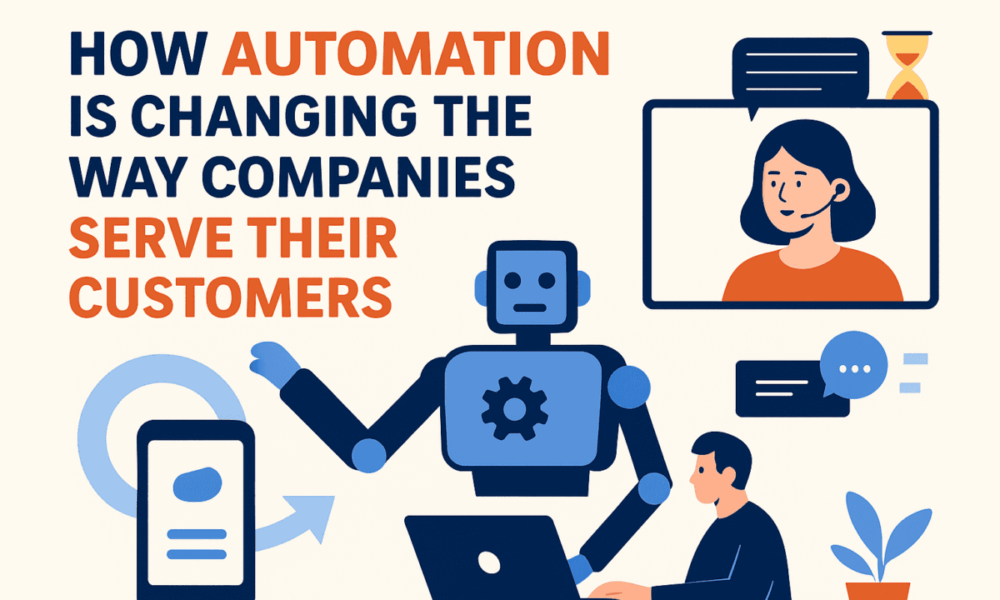How Automation Is Changing the Way Companies Serve Their Customers

The way businesses provide customer service has transformed dramatically over the last decade. What once relied heavily on phone calls and manual processes is now powered by intelligent systems that can respond instantly, anticipate needs, and free up human agents to focus on higher-value interactions. Automation has shifted from being a nice-to-have feature to becoming a core part of modern customer service.
For companies looking to remain competitive, understanding how automation reshapes service delivery isn’t optional; it’s essential.
Speeding Up Response Times
One of the most apparent benefits of automation is faster response. Customers expect help immediately, whether they’re using live chat, social media, or mobile apps. Automated tools, such as chatbots and scripted workflows, can provide instant replies to frequently asked questions.
This immediacy reduces frustration and sets the tone for a positive interaction. Even when an issue requires escalation to a human agent, the initial automated touchpoint reassures the customer that their request has been acknowledged and is being addressed.
Handling High Volumes Seamlessly
During peak seasons or unexpected surges, customer service teams can easily become overwhelmed. Automation helps companies manage these spikes by taking care of repetitive, straightforward inquiries. Instead of hiring large numbers of temporary agents, businesses can rely on technology to scale efficiently.
This doesn’t just keep costs in check; it also ensures consistency. Automated responses are delivered the same way every time, minimizing errors and maintaining brand standards even during high demand.
Enhancing Personalization
It might sound counterintuitive, but automation can actually make interactions feel more personal. By integrating with customer data platforms, automated systems can tailor responses based on a person’s history, preferences, or location.
For example, an automated email might recommend products based on past purchases, or a chatbot could recognize returning users and pick up where they left off. These small touches reinforce loyalty and demonstrate that the brand values the individual, not just the transaction.
Freeing Up Human Agents
Perhaps one of the most important impacts of automation is that it allows human agents to focus on complex, sensitive, or high-value interactions. When routine tasks are handled automatically, agents are freed from answering the same basic questions repeatedly.
This shift benefits both sides. Customers get faster answers to simple queries, while agents have the time and mental space to deliver thoughtful, empathetic service where it matters most. It’s this combination of automation and human support that creates the strongest overall experience.
Data-Driven Improvements
Every interaction powered by automation generates data, patterns of customer behavior, common questions, and areas where people run into challenges. Businesses can use this data to refine their processes, improve products, and even predict future needs.
For example, if a large number of automated queries indicate confusion about billing, it may signal a need to simplify the process or improve communication. Over time, automation becomes not just a tool for efficiency but a driver of continuous improvement.
Part of the Bigger Digital Picture
Automation plays a central role in broader digital cx solutions strategies. It integrates with communication platforms, CRMs, and analytics tools to create a unified customer service ecosystem. Rather than operating as a standalone feature, automation enhances every touchpoint, making the overall journey smoother and more consistent.
The key for businesses is to strike the right balance. Too much automation can feel impersonal, while too little creates bottlenecks. The goal is to use automation to remove friction and empower both customers and agents.
Automation is no longer about cutting costs or replacing people. It’s about making service smarter, faster, and more human where it counts. Companies that approach it strategically can transform service from a reactive function into a proactive advantage.
Partners like Sutherland help businesses put these principles into action, designing customer service systems that combine technology with human insight. With the right approach, automation becomes more than efficiency. It becomes a way to strengthen relationships and build lasting trust.

Source: How Automation Is Changing the Way Companies Serve Their Customers




